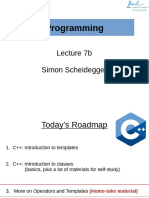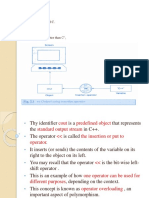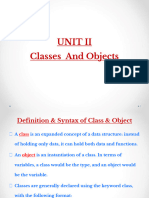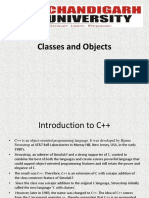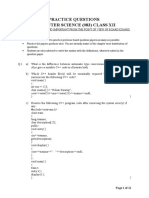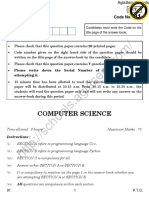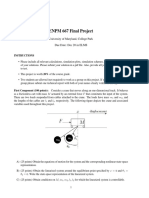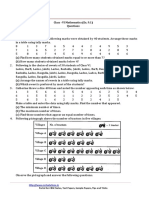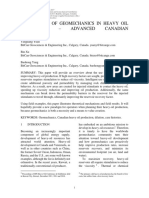0% found this document useful (0 votes)
44 views3 pagesDefining Member Functions & Memory Allocation For Objects
Member functions in C++ can be defined either inside or outside the class definition, with the function body remaining the same but the header changing based on the location. Memory for member functions is shared among all objects of the class, while separate memory locations are allocated for member variables of different objects. Inline functions can be defined outside the class using the scope resolution operator, and memory is allocated when objects are created.
Uploaded by
akankshat2007Copyright
© © All Rights Reserved
We take content rights seriously. If you suspect this is your content, claim it here.
Available Formats
Download as PDF, TXT or read online on Scribd
0% found this document useful (0 votes)
44 views3 pagesDefining Member Functions & Memory Allocation For Objects
Member functions in C++ can be defined either inside or outside the class definition, with the function body remaining the same but the header changing based on the location. Memory for member functions is shared among all objects of the class, while separate memory locations are allocated for member variables of different objects. Inline functions can be defined outside the class using the scope resolution operator, and memory is allocated when objects are created.
Uploaded by
akankshat2007Copyright
© © All Rights Reserved
We take content rights seriously. If you suspect this is your content, claim it here.
Available Formats
Download as PDF, TXT or read online on Scribd
/ 3

